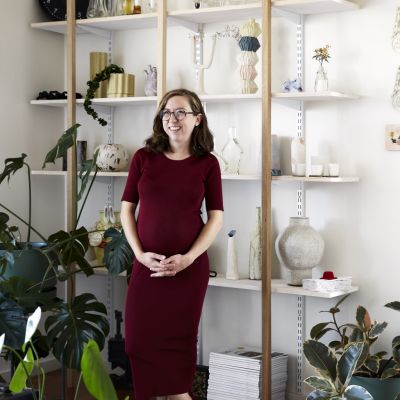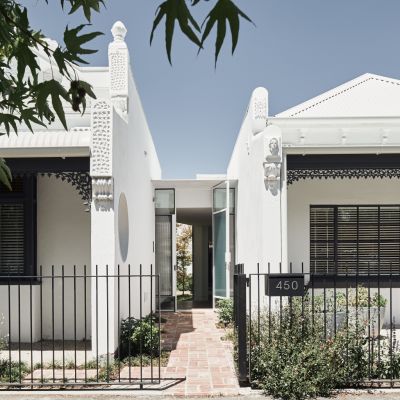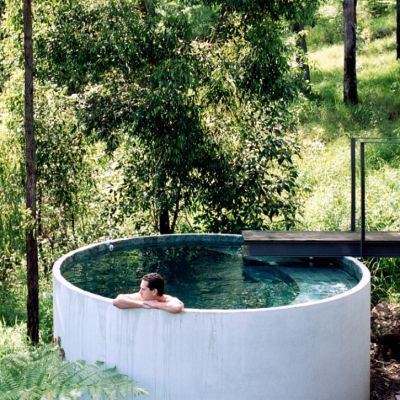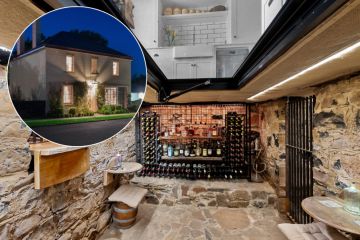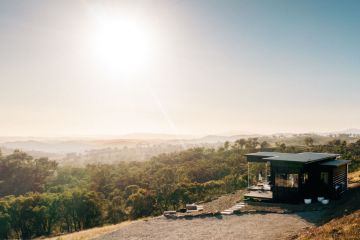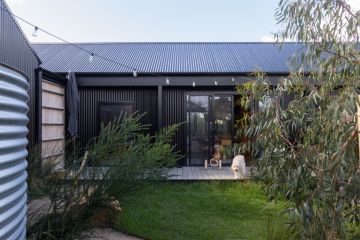The Design Files: The serene, handcrafted home of Zana Wright
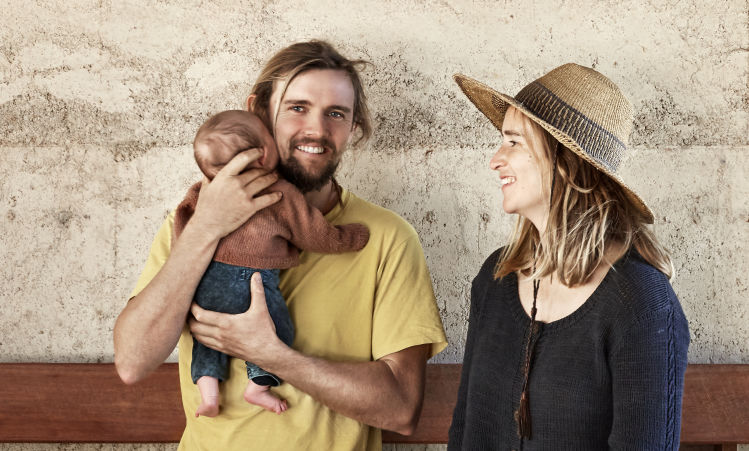
Who: Architectural designer Zana Wright and partner Sam Jolly
What: A serene, handcrafted home
Where: Byron Bay, NSW
After moving into a converted cowshed at the end of her parents’ property in Byron Bay, architectural designer Zana Wright and her partner, builder Sam Jolly, designed and built this stunning new self-contained home on the property.
Listen to our chat with Zana on Somewhere Else:
The new house is made of earth, stone and Australian hardwoods, all locally sourced, and deeply connected to the environment.
The house is designed to have a “minimal environmental footprint” and is informed by the local context in a very material way.
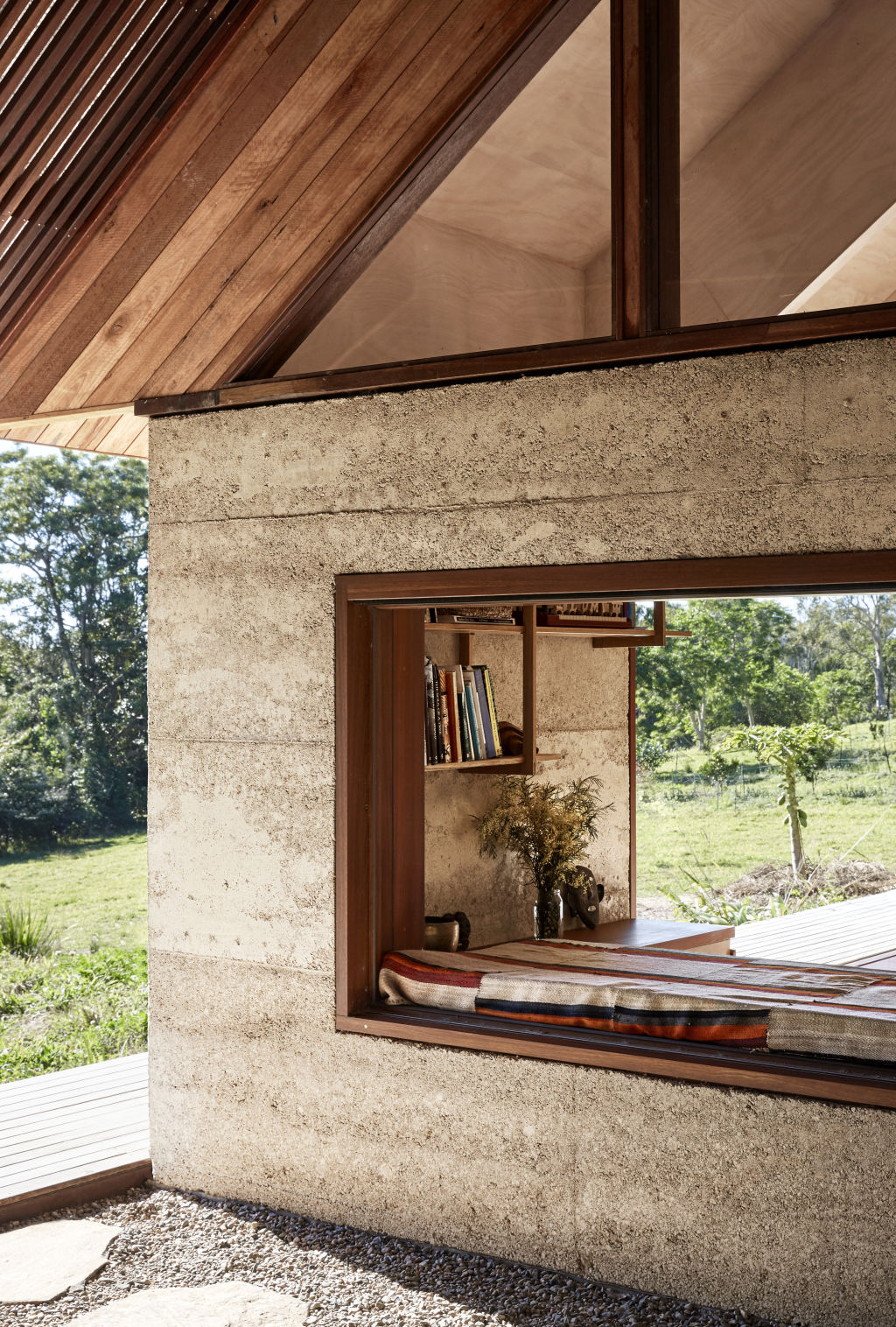
The home was built by local sustainable builders Balanced Earth (balancedearth.co), whom Jolly works for. Wright, her dad and Jolly also collaboratively built the joinery, kitchen, bathroom and earthen floors. This home is a true family affair, and the living arrangement is a unique one – Wright, Jolly and their baby Lumi rent the home they designed and built, with her parents set to move in later, when they are ready to downsize. Everyone wins!
The design of the home allows the family to be connected to the changing cycle of the seasons.
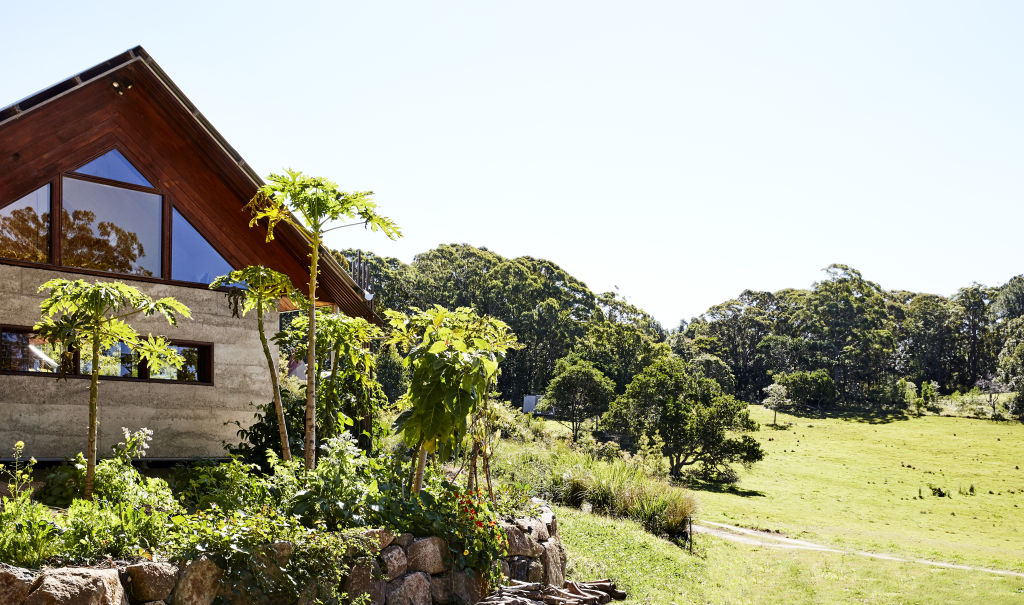
Wright is both romantic and realistic about the open-plan design, saying “Having parts of the house situated outside undercover is climatically appropriate for our subtropical bush location, however, we do still have a winter, during which I enjoy how the house forces you not to become too precious.”
Wright describes the interior styling as “simple and honest” with the construction materials visible in the finished design. These earthy and raw tones and textures serve as a backdrop for the family’s collection of handcrafted artworks and objects – made by the couple, their family or swag of creative pals.
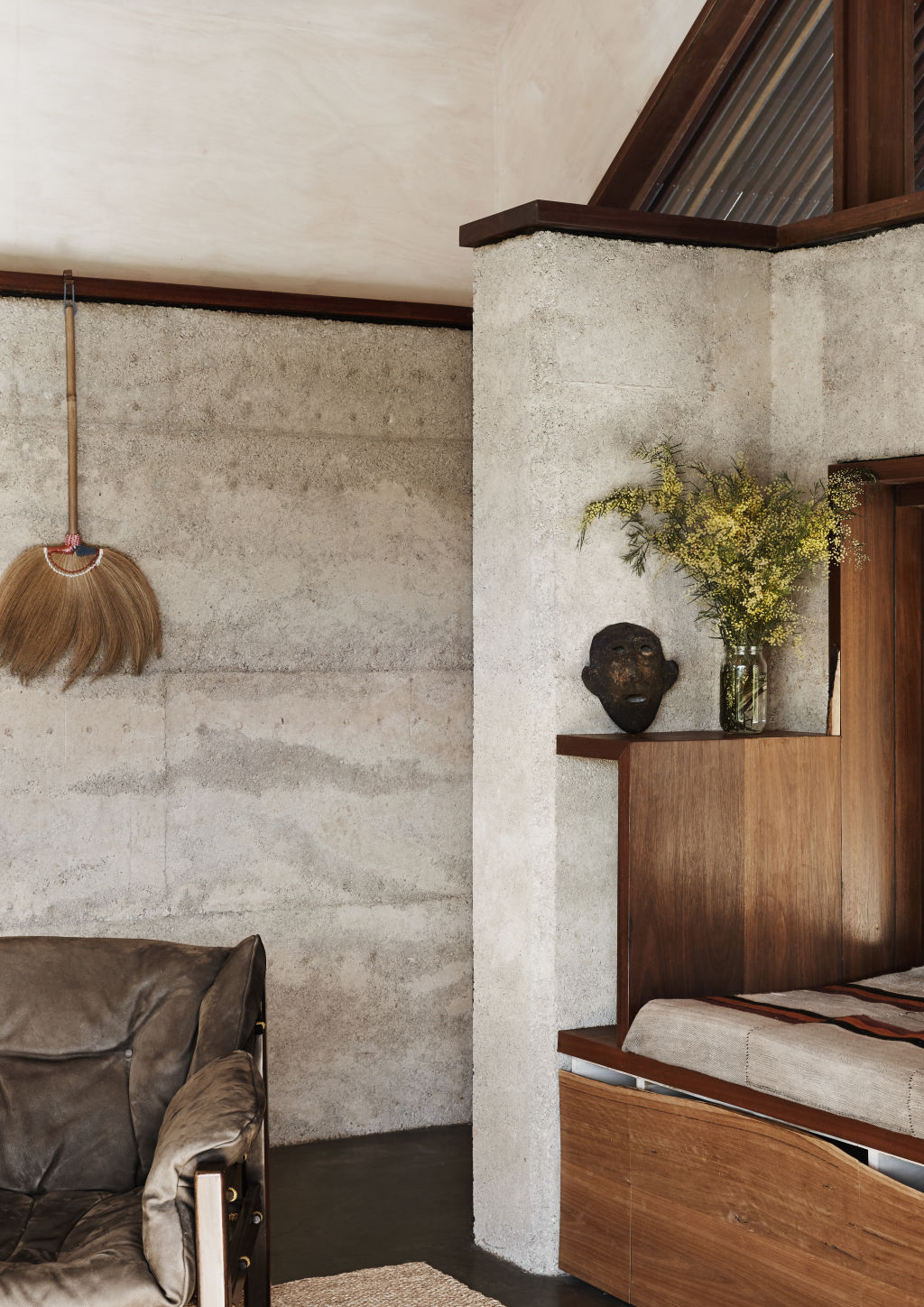
Wright’s favourite space is the outdoor bathroom. She talks of the pure joy of standing under a hot shower in chilly winter air with the Milky Way overhead.
While this might all sound and look like an absolute dream, Wright says the build wasn’t without its difficulties.
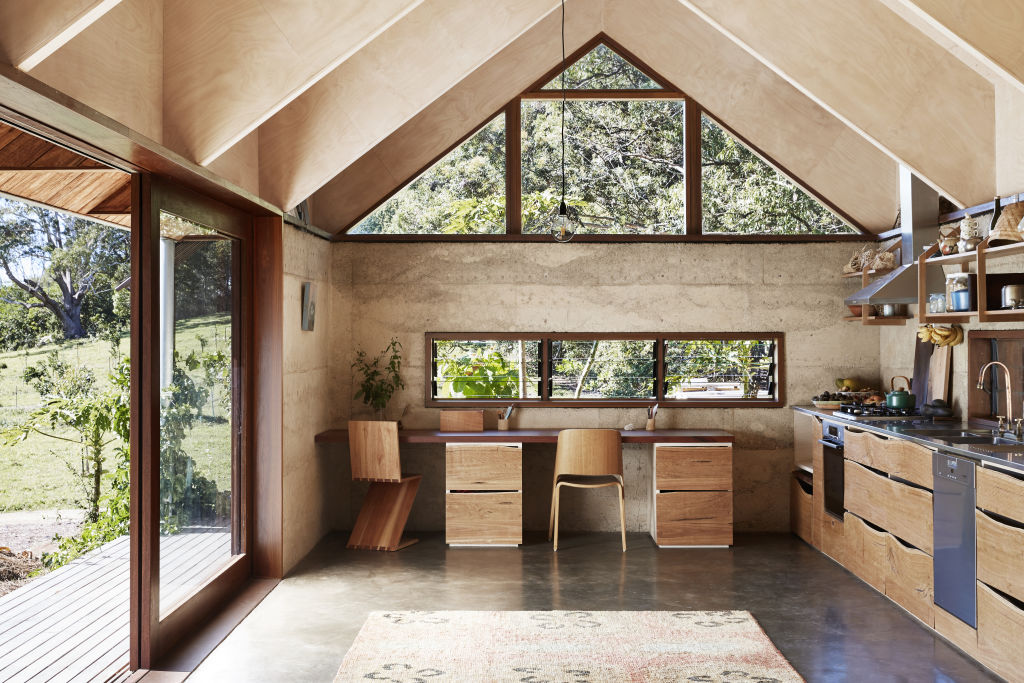
Building with local materials sounded like a sensible and relatively easy idea at the outset but, incredibly, it wasn’t always the more convenient or cost-effective option.
Wright says that, counter-intuitively, “I found that using natural and recycled materials over standardised materials bought from the hardware store usually involved extra labour, which was difficult to reconcile with the budget”.
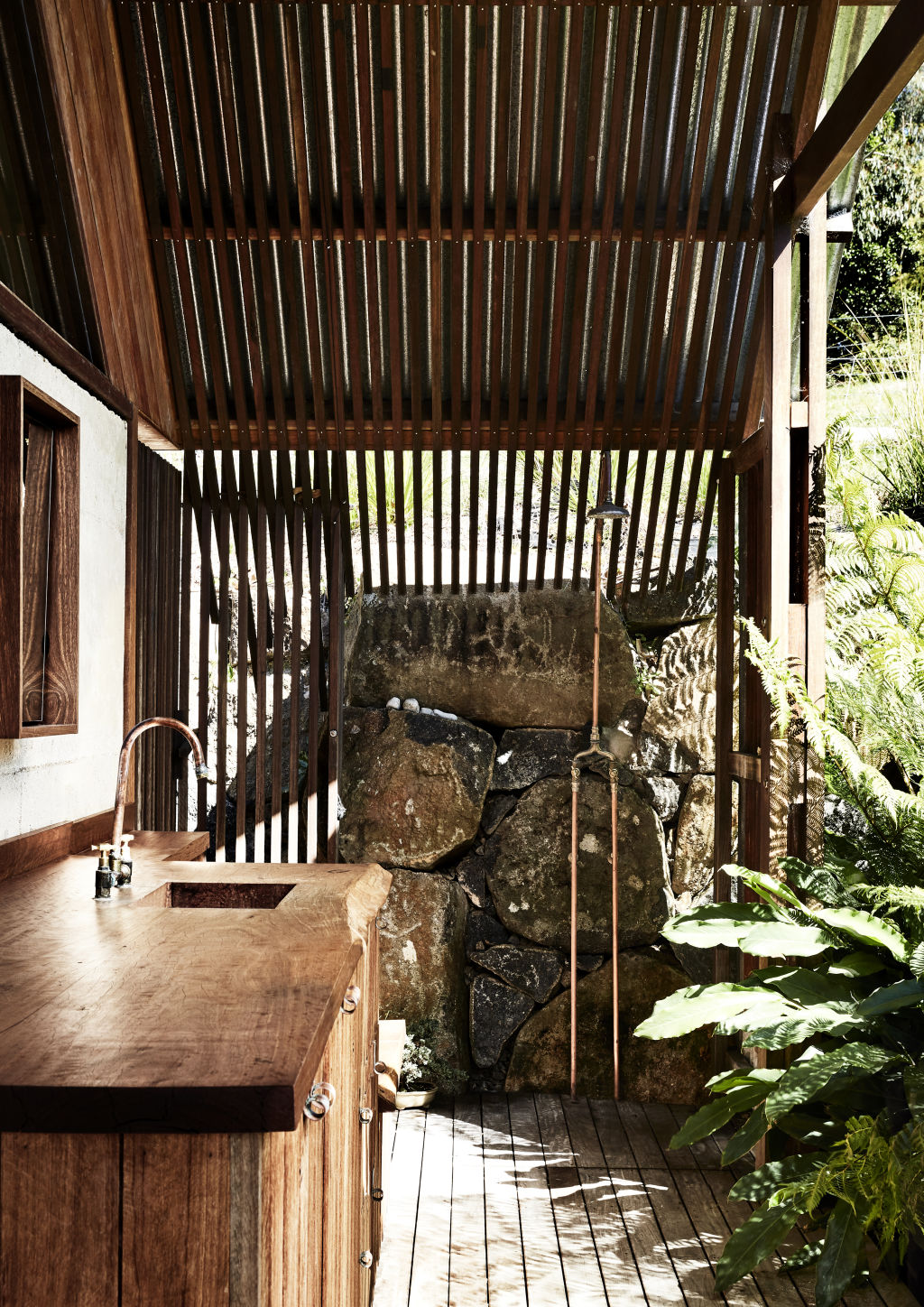
Despite these minor setbacks, Wright and her family cherish the home they’ve created here. It’s been a truly collaborative labour of love, and Wright, Jolly and Lumi are fully embracing their current living arrangements, until it is time to hand over the keys to her parents.
How to use honest materials
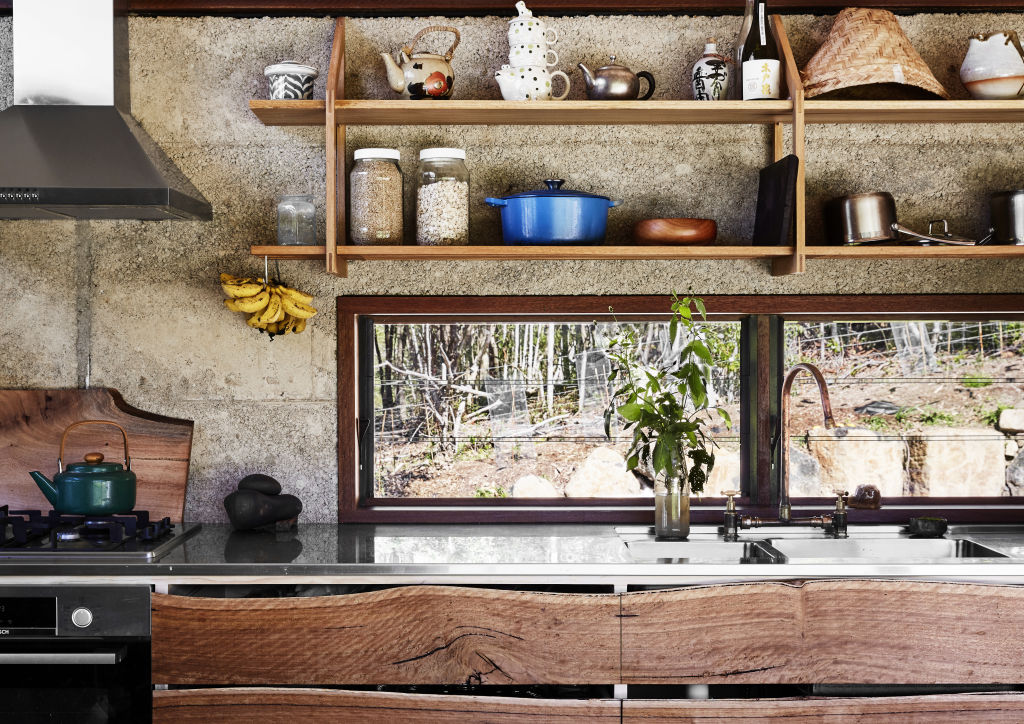
What that means in real terms is building or renovating your home with materials that can be seen and celebrated.
- If your home has original timber panels or timber beams, expose them and sand them back to reveal the texture.
- Avoid plastering or painting over original materials. We love internal walls of exposed brick, concrete, or even rammed earth.
- Recycled materials present a great opportunity to build or renovate without that shiny “brand new” feeling.
- There’s a huge trend for engineered floorboards right now. But if you’re lucky enough to have original solid timber floorboards under your carpet, lino or tiles, then polish what you have, don’t cover them up.
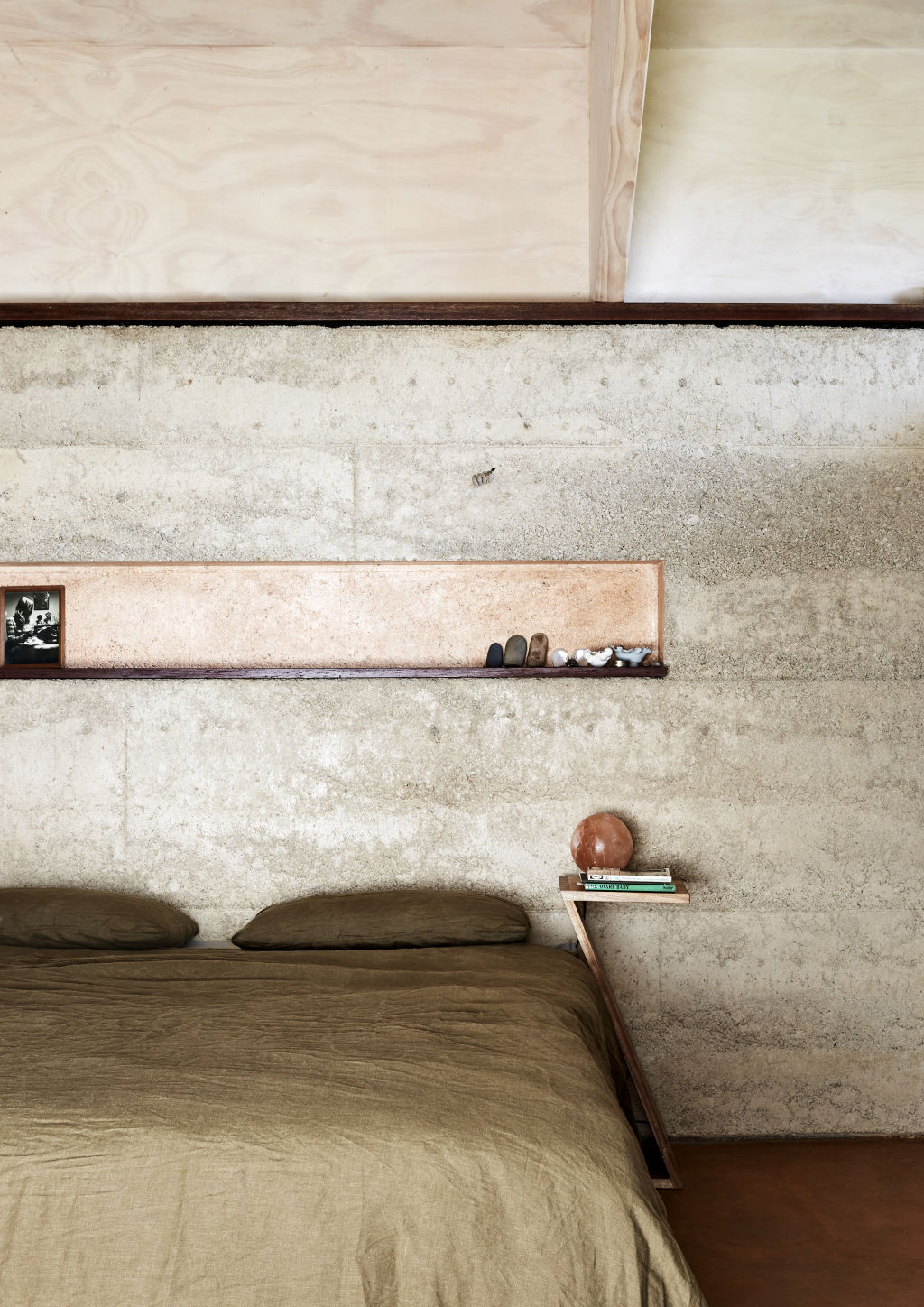
We recommend
We thought you might like
States
Capital Cities
Capital Cities - Rentals
Popular Areas
Allhomes
More
